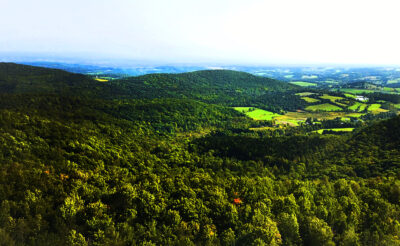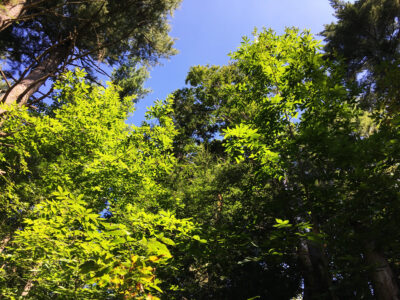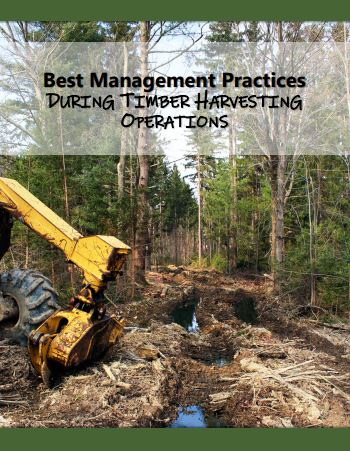Project Description
Best Management Practices During Timber Harvesting Operations
Forest Management Guide Background
In 1997, Chemung County SWCD in partnership with a large group of contributors developed a Forestry BMP guide to address erosion concerns during timber activities. The printed guide was targeted to private landowners, timber harvesters, consulting foresters and municipal officials in Chemung County, NY. The booklet was used by community members throughout the county to improve soil management in harvesting projects, and even by some municipalities to develop logging guidance, from timber harvesting rules to ordinances. Despite its usefulness, after 23 years, the age of the material coupled with no digital copy available, made an update necessary. With funding provided by FLLOWPA, Chemung County SWCD spearheaded an update to the guide in 2019.
Guide Update
The guide update was developed through a partnership of Chemung County SWCD, Schuyler County Cornell Cooperative Extension, and the USC, and began with a review of the original booklet and digitization of the booklet text. Updates included a streamlining of the format, reorganization of the chapters, addition of timber harvest sales contracts guidance, and the broadening of the booklet scope to include the region rather than just Chemung County. Several BMPs were added and several were removed to better match their current use in the region. Updates to most of the BMP drawings, as well as several photos were provided courtesy of the Watershed Ag Council from their 2018 New York State Forestry Voluntary Best Management Practices for Water Quality.
Forest Management is Important
Nearly two-thirds of New York is covered by more than eighteen million acres of forest, most of which is privately owned. At the 2018 inaugural “Forestry Summit” in Binghamton state officials reported that the forest industry contributes $23.5 billion dollars annually to New York’s economy, making it one the state’s largest industries. Additionally, our forests provide benefits that extend far beyond their economic value and are a driver of numerous other industries including tourism and recreation.
Our forests are a renewable resource that, if managed well, will provide these benefits for generations to come. Active management of private woodlands is more important than ever before to counter the growing number of threats to maintaining healthy and productive forests. These threats include: exotic forest pests; invasive forest plants; excessive selective browsing of seedlings by deer; extreme weather events; accelerated natural mortality in the increasingly mature current forest; and the short-sighted forestry practice known as “high-grading” where the best trees are removed and “poordoers” of significantly lower quality and potential are left.
Similar to weeding a garden, periodic timber harvests are part of an active management program to sustain forest values. There are several key considerations to ensuring a positive outcome from a harvest: careful planning; professional assistance; a sound contract; and the diligent use of timber harvesting “Best Management Practices” (BMPs) designed to protect water quality through the concurrent protection of healthy forests and soils.
Forest Management Resources
Independent consulting foresters are available throughout New York to act as the woodland owner’s expert agent in successfully executing these steps. Although consulting foresters will charge for their services, this cost is often repaid multiple times over by having their expertise involved in the sale and execution of the harvest. Visit the NYS Department of Environmental Conservation’s website (dec.ny.gov) and search for “Cooperating Foresters” to find local consulting foresters.
This guide was developed to outline practical, sensible and feasible BMPs designed specifically to protect water quality when harvesting timber. Clean water is essential to our economy and quality of life, providing water for: drinking and bathing; agriculture, commercial and industrial uses; and fisheries and wildlife habitat. These water resources also provide opportunities for recreation, education, research and aesthetic appreciation. Healthy forests contribute to summer temperature moderation and provide reliable base flows for our streams and rivers.
Click the following to view the .pdf of the full guide,
Or contact Chemung County SWCD for a printed copy of the guide at $3 each.
Project Partners
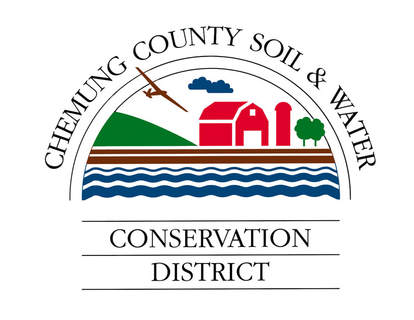
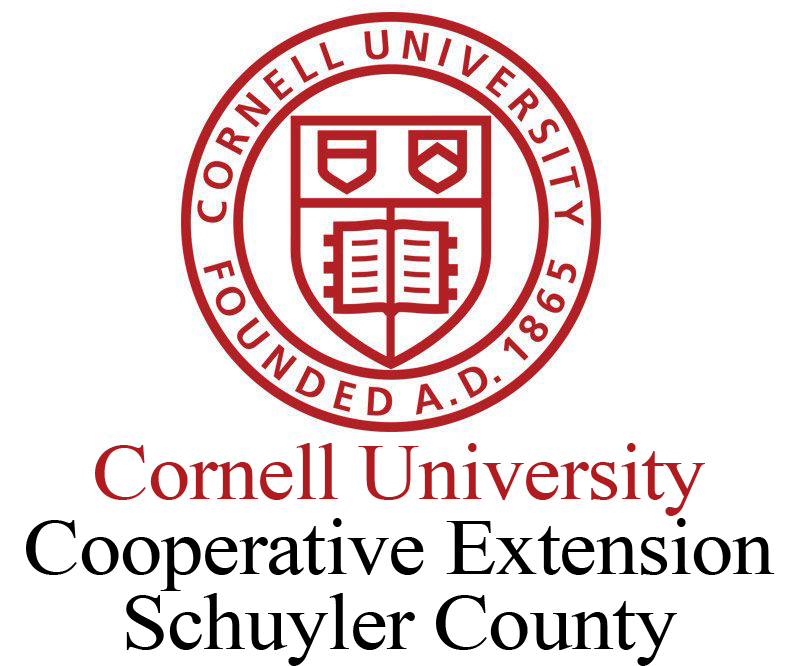
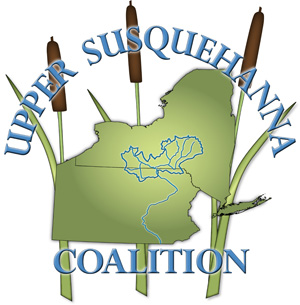
This Booklet Includes
Nonpoint Source Pollution
Harvest Planning
Identifying Sensitive Areas
Forest Roads and Skid Trails
Stream Crossings
Soil Stabilization
Timber Harvest Sales Contracts
and reviews a wide range of BMPs that should be reviewed in different site conditions
Forestry Management Resources
Cornell Cooperative Extension’s Master Forest Owner Program: https://blogs.cornell.edu/ccemfo/
Chesapeake Bay Program Forestry Workgroup: https://www.chesapeakebay.net/who/group/forestry_workgroup
ESF website on Forestry Best Management Practices: https://www.esf.edu/pubprog/forestmanage/
NYS DEC website on private forest management: https://www.dec.ny.gov/lands/4972.html
Private Forest Management, Find a Forester: https://woodproducts.ny.gov/assistance-forest-owners-0
North Carolina Forest Service Manual on Best Management Practices: https://www.ncforestservice.gov/water_quality/bmp_manual.htm
Summary of Recommended BMPs
• Whenever possible, winch logs from steep slopes if conventional skidding would disturb an unusually high surface area of soil. Skid with the ends of logs raised to reduce gouging.
• Avoid operating equipment where or when excessive soil compaction and rutting may cause erosion that affects water quality.
• Repair ruts; install sediment control and drainage structures on skid trails, forest roads and landings where needed to prevent erosion and sedimentation into surface waters.
• Apply seed and mulch after water control structures are installed and during appropriate weather conditions for germination and establishment. Inspect soil stabilization practices periodically during, and immediately after harvest operations to ensure they are successful and remain functional.
• Keep slash and tops out of streams. Do not pile slash into drainage areas where runoff may wash it into streams or wetlands or cause culvert and bridge blockages downstream.
• Log steep slopes during dry weather when soils are dry, or when the ground is frozen and snow covered. • Remove any litter and empty fuel containers from the site.
• Mark stream channels, stream crossings and existing culvert locations before snowfall.
• During adverse weather conditions, move harvesting operations to well drained areas. Conduct operations when ground is frozen or snowfall is adequate to minimize soil disturbance.
• Shut down skidding and truck traffic when soils become saturated and will not support equipment.
• During and after winter harvesting, make sure all culverts and ditches are open and functional.
• Following completion of snow road use, restore stream crossings to near pre-road conditions to prevent ice dams.
• Temporary water control structures should be installed before leaving the site. Final clean-up should be done as soon as weather permits.
• The need for local, state, and federal permits should be considered when planning the forest road system.
• Use aerial photographs, topographic maps, or soil maps if necessary, to identify critical site features.
• Keep the length and number of roads and skid trails to a minimum. Use existing roads and skid trails where feasible and modify these if necessary. Total length of skid trails can be significantly reduced with good planning.
• Access through adjacent land holdings may be advantageous – written permission from the owner must be obtained.
• Identify optimum stream crossings before locating the rest of the road. Keep the number of stream crossings to a minimum.
• Locate roads and skid trails cross slope to minimize erosion and to provide cross-drainage.
• Decide on the most effective road design and water control measures to reduce erosion.
• Avoid long, sustained grades and sharp curves. Road grades should not exceed 10% (3-5% is desirable). Primary skid trail grades are normally less than 15%. Where steep grades are unavoidable, break the grade and install water diversion structures.
• Provide ways to divert running water off roads and primary skid trails. Use broad-based dips (on slopes of less than 10%) and water-bars at appropriate intervals.
• When necessary, maintain a stable entrance to public roads with geotextile and stone or recycled tires made into mats to help clean mud off truck tires. All sediment spilled, dropped, washed or tracked onto public roads must be removed immediately.
• Keep roads free of obstructions, ruts and logging debris so that water can flow freely from the road surface.
• Never run ditch water directly into a stream or other body of water and install sedimentation ponds where appropriate.
• Never skid in stream channels.
• Avoid creating new and additional skid trails where unnecessary.
• After harvesting operations, smooth road and primary skid trails and install water diversion structures as needed.
• Keep landings out of low spots and poorly drained places.
• Locate landings on firm well-drained soils with a slight slope to promote efficient drainage.
• Use existing landings if possible. Locate new landings in areas that will minimize skid trail and haul road mileage.
• Locate residue piles away from drainage areas.
• Adequate drainage on approach roads will prevent road drainage water from entering the landing area.
• If landings will be used during wet periods, protect the surface with suitable material such as rock, recycled tire mats, or slash.
• During wet periods, the building of truck pads is recommended to prevent the tracking of mud onto public roads.
• Locate landings as far as possible from streams, ponds and wetlands to reduce chances of siltation.
• To avoid sedimentation from landings, install drainage structures such as water bars, culverts or ditches. In every way possible, keep water off the landing.
• To intercept and detain small amounts of sediment from landing areas install sediment barriers such as silt fences.
• Landings should be seeded with grasses and/or legumes after use to stabilize erodible areas and prevent sediment and nutrients from entering surface waters. Seeding can also be done to improve wildlife habitat and for aesthetic purposes.
Broad-Based Dips
• To be placed and used effectively on roads before major hauling use.
• Should not be placed where there are intermittent or perennial streams.
• Care should be taken to be sure that there is adequate drainage at the outflow of the dip and that there is an adequate buffer zone to allow filtering of the discharge.
• Broad-based dips should be sized for the site and purpose, with broader dips better suited to haul roads.
Water Bars
• To be placed after major hauling or skidding use.
• To be installed at a 30-degree angle down slope.
Pipe Culverts
• Pipe culverts should only be installed on roads that will be actively maintained. Significant erosion can result from improperly maintained or installed culverts.
• Pipe culverts should cross the road at about a 30-degree angle downgrade. A 12-inch pipe should be the minimum diameter used.
• A culvert inlet should be placed on the drainage level and as near as possible to the natural channel.
• During construction, seat the culvert on firm ground and compact the earth at least halfway up the side of the pipe to prevent water from leaking around it. Adequate cover is needed, the rule being a minimum of 1-foot, or half the culvert diameter, whichever is greater.
• If erosion of the inlet end is a problem, a headwall must be provided. Sandbags, with some cement mixed with the sand, durable logs, concrete, or hand-placed riprap are suitable.
Diversion Ditches
• Locate and install diversion ditches uphill from a stream crossing to disperse runoff water through an undisturbed area of vegetation.
• Construct diversion ditches so they intersect the roadside ditch at the same depth and are outsloped 1% to 3%.
• The size of the diversion and channel grade may vary depending on the area of the watershed. (Design recommendations are available from your local SWCD).
• Riparian Management Zones should be identified during the initial planning stage of your forest management plan.
• Obtain the necessary permits for crossing classified streams (Chapter 3).
• Directionally fell trees so the tops land away from the stream. This keeps debris out of the water and skidders farther away from the banks.
• Operate skidders a suitable distance from waterbodies (guidelines on page 9, RMZ recommended widths).
• Keep roads and skid trails a suitable distance from streams, ponds and wetlands. For slopes greater than 30% they are kept back 150 feet or more.
• Do not move slash into, or pile slash within the Riparian Management Zone if it is likely to be carried downstream by a flood event. Remove any tree tops that get into the water so streamflow is not affected.
• Stabilize all areas that may be subject to erosion at the close of a harvesting operation.
• The use of filter strips is recommended within a Riparian Management Zone and along any water body, especially where sediment is anticipated.
• Identify classified wetlands and obtain the required permits early in your planning stage.
• Keep slash out of wetland areas.
• Schedule the harvest during the drier seasons of the year or during a time when the ground is frozen.
• Identify classified streams and obtain the required permits early in your planning stage.
• Use stream crossings in your forest road system.
• Cross streams by the most direct route and avoid crossing at bends and through pools. Approaches should be as straight as possible for 50 feet on each side of the crossing.
• Find crossing sites that have low, stable banks, a firm stream bottom, minimal surface runoff and gentle slopes along the approaches.
• Make sure stream crossing structures will safely handle vehicle loads and are adequate for streamflow volume.
• Cross at a few carefully chosen places, rather than any place that seems convenient.
• The use of temporary culverts or bridges is recommended.
• Stabilize the soil around all culverts and bridges immediately after installation.
• Occasionally inspect culvert pipes to avoid plugging with leaves and debris especially before and after flood events.
• Minimize channel changes and the amount of excavation or fill needed at the crossing.
• Limit construction activity in the water to periods of low or normal flow. Keep use of equipment in the stream to a minimum.
• Divert road drainage into undisturbed vegetation so that the drainage does not directly enter the stream.
• Use mulch and/or seed where necessary to minimize soil erosion into streams and wetlands.
• Do the seeding immediately after logging activities cease if the season permits.
• During fall and winter, mulch alone may be used for temporary protection. “Frost seedings” may be done from February through April if there is no snow cover, however success is variable.
• Prepare the site by smoothing ruts and removing logging debris.
• Good soil to seed contact is necessary for successful seedings. The technique of tracking with a dozer will accomplish this.
• Water control devices, such as water bars, should be in place prior to vegetation establishment to properly manage concentrated flows.
• Vehicle traffic should be controlled to avoid damage to seedings.
• On larger logging jobs consideration should be given to establishing vegetation in stages.
Active Roads:
• Inspect the road system at regular intervals, especially after heavy rainfall, to detect problems and to schedule repairs.
• Clear debris from culverts, ditches, dips and other drainage structures to decrease clogging that can lead to washouts. Place the debris where it cannot be washed back into these structures or into open water. (MOST IMPORTANT!)
• Keep traffic to a minimum during wet periods and spring breakup to reduce maintenance needs. (MOST IMPORTANT!)
• Shape road surfaces periodically to maintain proper surface drainage. Fill in ruts and holes with gravel or compacted fill and grade and rake as soon as possible to reduce erosion potential.
• Remove berms along the edge of the road if they will trap water on the road.
Inactive Roads:
When forest roads are inactive for extended periods, closing the system will help to protect the road surface and the water quality protection structures. Consider erecting a barrier to traffic such as a gate or berm, and post “Closed” signs at the entrance of closed roads. Stating the length of time and/or reason for closure, and inviting acceptable uses may be helpful to assure compliance.
• Remove all temporary drainage and stream crossing structures. Inspect and maintain permanent structures.
• Shape all road system surfaces to maintain proper surface drainage, if necessary.
• Install water bars or other water control structures where necessary.

